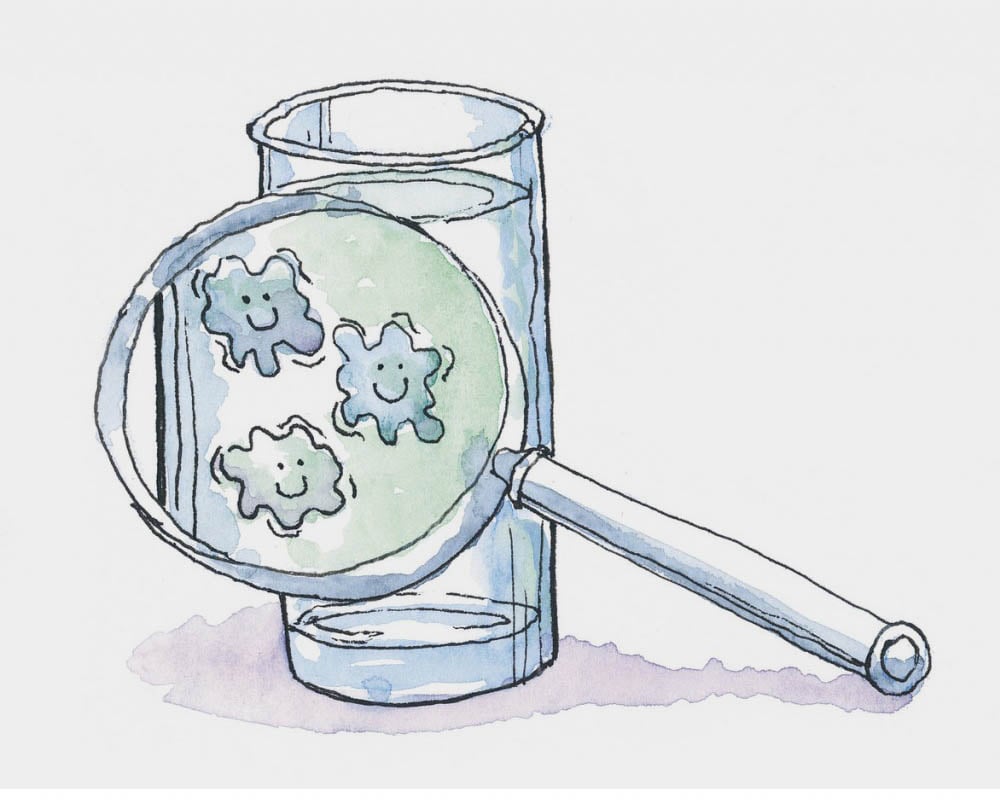Coliform and E.Coli Bacteria Water Contamination?


Coliform and/or E.Coli Bacteria In Your Well Water?
Bacteria exist in many well waters, especially shallow or poorly constructed wells under the influence of water from the surface. However even if your well is a deep properly constructed well, it can become accidentally contaminated by coliform bacteria. Septic tanks can contaminate drinking water wells with bacteria. In some cases, wells are contaminated as a result of recent service or pump repair work.
Other sources of bacterial contamination may include run-off from yards, feedlots, pastures, canine runs, and other farm land areas where animal waste products are deposited. Insect pests, rodents and/or wildlife coming into the well can also be reasons for pollution. Harmful microorganisms can enter a water source thru infiltration by means of floods or possibly by surface run-off during heavy periods of rainfall.
Contamination from pathogenic bacteria can cause serious health problems in many private water systems. Coliform (often referred to as “total coliform”) may not cause disease, but can be indicators of disease-causing bacteria such as E.coli or fecal coliform. The latter causes intestinal problems such as dysentery, hepatitis, cholera and typhoid fever. E.Coli is a form of coliform that is found in the guts of warm blooded mammals such as people, pets, livestock and wild animals.
Intestinal tract infections and dysentery are often thought to be minor health problems. They can, however, prove deadly to newborns, the aging population, and those that are ill. In certain areas typhoid, hepatitis and cholera are passed on through contaminated water sources. A water analysis is required to determine whether bacteria exist in your water supply.
If bacteria is present in your well or spring water, an effort should be made to establish and remove the origin of the contamination. Human and animal waste products are a prime source of unhealthy bacteria in water. the first and most important step is attempting to identify the source of the contamination and try to stop the contamination in the first place.
When to Analyze for Coliform Bacteria
If your water comes from your own private source, you are in charge of getting it tested to make sure it is safe.water source subjected to testing to confirm its safety.
When to have your well water tested for coliform bacteria:
- At least one time each year;
- If your well is new, or after it has been repaired or serviced
- At any time if your well has been affected by flood waters or surface run-off;
- At any time when microbial pollution is actually suspected, as could be indicated by ongoing disease
Recent Posts
Water Quality for Horses and Livestock: A Guide to Healthier Barns and Pastures
Clean water is the cornerstone of animal health and productivity. Whether you're raising horses, cattle,…
Clean Drinking Water for Cats: What Every Cat Owner Should Know
Why Clean Drinking Water Matters for Cats Hydration is critical to a cat’s overall health,…
Pet Hydration: What to Know About Water Safety
Clean Drinking Water for Dogs: What Every Dog Owner Should Know Clean drinking water is…
How to Ensure Fresh, Safe Water for Your Birds: Daily Care Tips for Bird Owners
Why Filtered Water for Birds Is Essential for Their Health Like food, clean drinking water…
U.S. Water Problems by Region: Common Contaminants & Solutions
Curious about U.S. water problems by region? Water quality isn’t just a national issue—it’s a…
Wildfire Water Contamination: How to Ensure Safe Water After a Fire
Wildfire Water Contamination: What You Need to Know After the Fires Drinking water contamination is…


